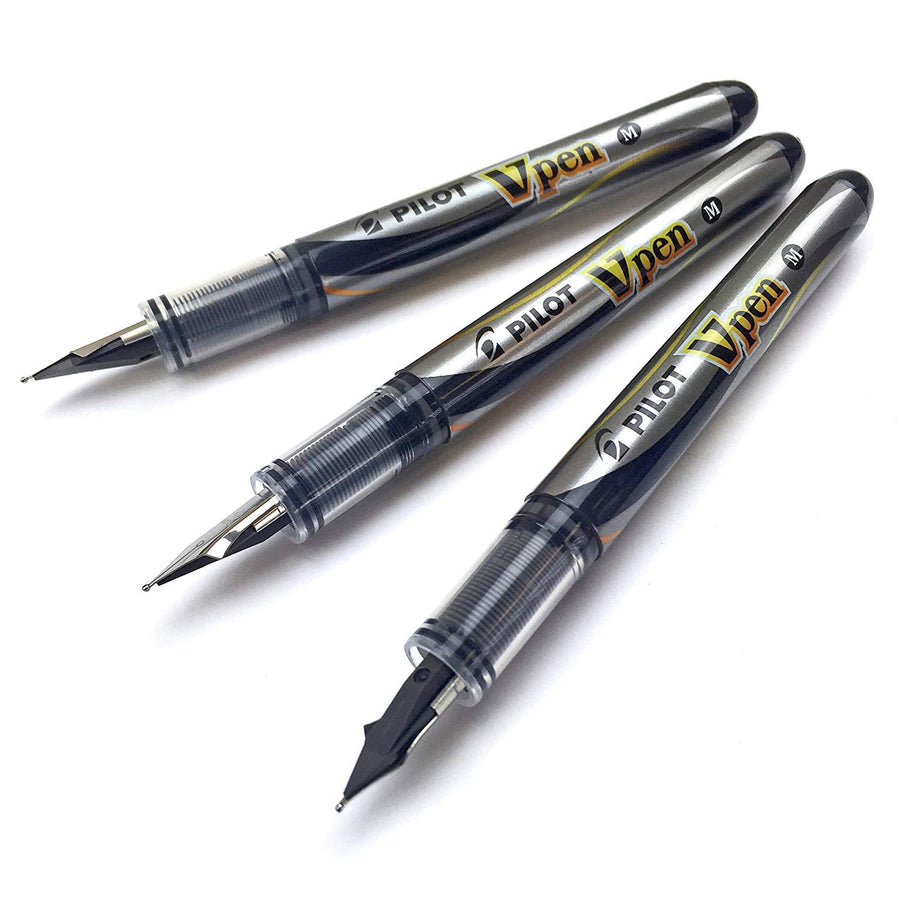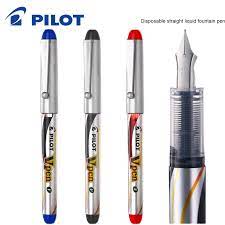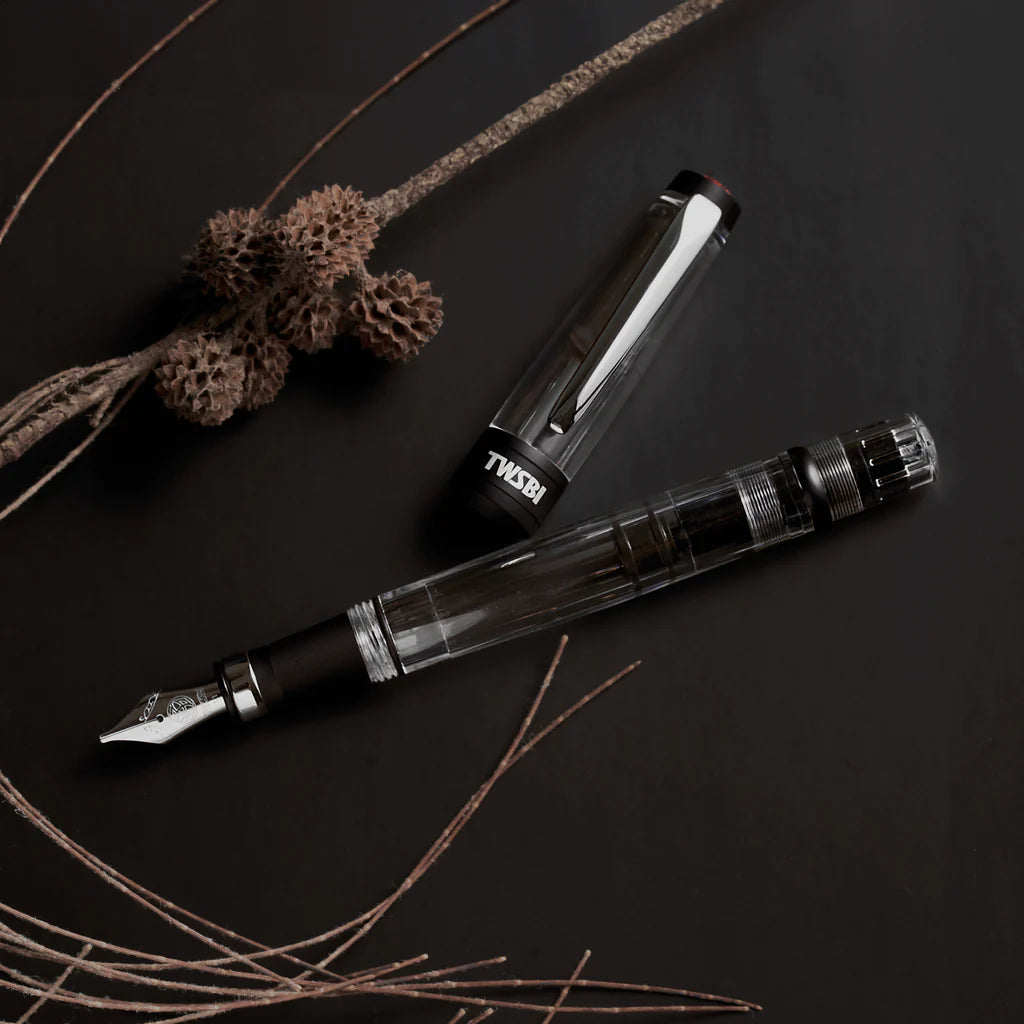How are Fountain Pens Made?

We are often asked 'how are fountain pens made"? We thought we should give a brief story about how fountain pens are made, what the various parts are that make up a fountain pen, and the history behind fountain pens.
Through the passage of time, humans have used various instruments to convey thoughts, messages, and feelings. Man first used his finger to form symbols in the sand. Later, sharp stones and pieces of bone were used, and later still, metals were developed and techniques invented to shape these metals.
The earliest material used to write on was clay. Ancient Greeks wrote with waxed tablets marked by styluses, while early Egyptians often utilised hollow reeds. These reeds were cut at an angle at one end to enable the markings on papyrus sheets without breaking through the delicate sheets.
It is thought that ancient Chinese methods and materials might go back much further in history than we have evidence for.
The History of Fountain Pens
Why are they called "Fountain Pens"?
The steel dipping pen was developed in the 18th century, which was swiftly replaced by quill pens, made from bird feathers whose ends had been split and sharpened. The main disadvantage with these early writing tools was that they required frequent maintenance - dipping for ink each time you needed to write something new onto your page or scroll. This problem was solved when a more efficient technology emerged, where the writing tool no longer needed constant replenishment since it contains its own ink supply inside itself - it seemed as if there was a fountain of ink always available - hence the name "Fountain Pen".
As early as 1775, Fountain Pens were popularised as a more elegant and durable alternative to quill pens. They had reservoirs for the ink, which were filled with medicine droppers, with advancements in design continuing through most of the 1800s.
The Birth of Waterman Pens
Lewis Edson Waterman is credited with creating one such device; he did so while acting as an insurance agent for New York Life Insurance Company in 1884, which was a revelation and a huge success, needing neither sharpening nor an external ink bottle. He started producing self-feeding pens at an alarming rate (at the time) of 36 pens per week. The demand quickly skyrocketed and Waterman had no option but to open up shop on Broadway where his six-story production facility was later expanded even more.
Medicine droppers had a short life because the rubber could not withstand the chemical action of the ink. Rubber sacs were introduced in 1890 and improved over time, with newer models lasting longer. In the 1920s new methods of creating rubbers were developed which were resistant to the abrasive inks and the reduced toxic fumes released in the manufacturing process.
Modern-Day Fountain Pens
Design improvements have continued up to this modern-day, with the process being perfected to such a point that enhancements and differentiation can only be in the area of finish, materials of the barrel and nib, and fashion accessory branding.
It is no longer about whether you use a fountain pen, it's about the Brand of pen you represent, or the decorative style; colour; design that portrays who you are and what you value.
What are Fountain Pens made from?
Barrel
The barrel of a fountain pen can be made from many different materials, including silver or gold. Modern manufacturers often use less expensive plastics for their products like Lucite (acrylic resin) which is used in models by Parker 51; cellulose acetate; and other injection-moldable polymers. The most popular type today is Celluloid - a synthetic material originally patented as "photoresist".
The first barrels were made of black hard rubber, chosen because it is ink-resistant and easily machinable. Postwar pens are more commonly made from durable plastic; however, there's no shortage when you consider how many options people have for materials: gold, silver, brass, wood, bone, or resin.
Handmade pens can be created from wood or almost any material that is solid, stable, and easy to work with. Examples of these materials include plywood, crushed velvet, bone, leather, antlers, and stainless steel. The clips and other fittings are usually made out of gold alloys. In some cases, though designers may use different types of metal for their design which will have an effect on how it feels when writing with them due to its individual properties such as weightiness etc.
Nibs
The most common material for the nib of fountain pens is stainless steel, although gold or sterling silver may also be used. Some manufacturers use an electroplating process to coat their clip and other fittings with a thin layer of gold before they are soldered onto pen bodies.
Gold has been used for making nibs since the first sets were created. The choice of gold provided a balance between cost and durability, but when it became too expensive to produce in large quantities many people turned towards cheaper alternatives like steel or plastic which are still being used today among high-end pens that demand only top quality products from start to finish. The earliest formative stages of nibs include using alloys made of especially hard metals such as iridium; these gave them extra strength against corrosion while also contributing some resilience themselves through plating processes before they're dipped into paint.

The Design of Fountain Pens
Fountain pens are available in a variety of designs and styles. Some come from mass-produced while others have been custom designed, some possible variations on design include intriguing patterns or colour combinations that change the look of your clip to give it an entirely new feel. Nibs include intricate designs which enhance the writing appeal. This is the area where manufacturers focus all their attention on lately, how to make their designs stand out and enhance the appeal by becoming a fashion accessory.
Although fountain pens are available in a variety of styles offering unique features, each is comprised of the same basic components: the nib, or point; the barrel, which holds the ink reservoir, and the cap, which fits over the nib of the pen to protect it from damage. Ink flows from the reservoir to the nib at a balanced rate of flow using a force called capillary attraction. This is the same force that causes a blotter to absorb ink or kerosene to flow up the wick of a flame.
The Manufacturing Process
Some people have found that they are able to create their own personalized pens, even if it's just for themselves. They use materials and processes which vary depending on the company or individual making them. The larger manufacturers of fountain pens often follow automated processes. However, some smaller companies continue creating them manually with more traditional methods such as using leathers sourced locally when processing parts associated with writing utensils, assembling and manufacturing by hand, by gifted and experienced artisans and craftsmen.
At large companies, the process for making fountain pens is more automated. These manufacturers use specially tooled machines that mold and stamp out pen barrels from molten plastic; these are usually assembled by robots with human assistance as needed. Finally, there's always an employee assigned to clean each finished product and test each nib before it leaves their store!
The Components that make up a Fountain Pen
- NIb. Fountain pen nibs serve an important role in that they bring the ink onto paper. These once inexpensive and more common alternatives to expensive gold dipsticks were traditionally made with a metal such as silver for its corrosion resistance, but the best nibs have at least an element of gold in them. They are rarely solid gold, since this will make the nibs too soft.
- Feeder. The feeder is the most important part of any fountain pen; arguably more so than the body or cap. It provides smooth, steady flow for ink to enter and exit your writing instrument. The feeder on a fountain pen is what makes it write well. The delicate balance of forces allows for the correct passage of ink from tank to nib, and this depends on how well it is designed.
- Section. The section, also known as the pen's tip, is where it meets the nib and feeder. It'll keep in contact with them while providing an easy way for you to grip your writing instrument properly - which means that there should always be some sort or flare at this point on all pens.
- Barrel. The barrel, or body, is usually the largest and longest part of a fountain pen. In modern cartridge filled pens, it provides support for the use of the pen and covers the cartridge, but initially, when the pens were loaded with droppers, it was used directly as an ink tank. It is often transparent, or has a see-through window to enable the writer to see how much ink is available.
- Cap. The cap is an essential part of any fountain pen (except capless pens of course), such as the Pilot Vanishing Point or Lamy Dialog, because it provides protection to the delicate nib when the pen is not in use. It provides some protection against leaks too.
- Clip. Although the first fountain pens were not equipped with a clip, the use of the clip (usually placed on the cap) allows a simple attachment of the pen to the pocket of the shirt or jacket, becoming one of the most relevant components, present on the vast majority of pens. The clip is also often used to embellish a pen with an intricate recognisable design or logo.

The Refill Mechanism
Modern Fountain Pens usually use either a disposable ink cartridge or a converter, which allows one to suck up ink from a fountain pen ink bottle. The choice as to which method one should use is often decided by personal preference or convenience.
Certain specialist pens, such as some TWSBI models, some highly-specialised models such as the Lamy 2000, and many Italian Brands will only use the integral piston-filled method.
This blog is an excerpt from the blog on our international sister site: pensmithy.com











It’s nearly impossible to find educated peoplee on this subject, however,
you seem like you know what you’re talking about! Thanks https://mostbetcasino.wordpress.com/
Leave a comment